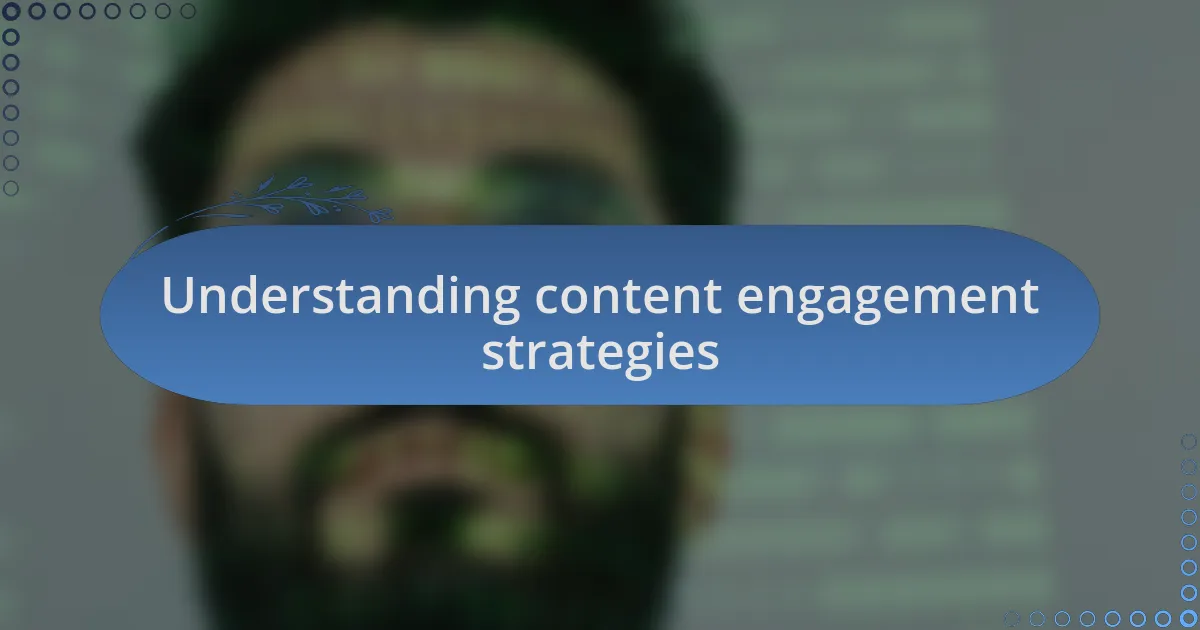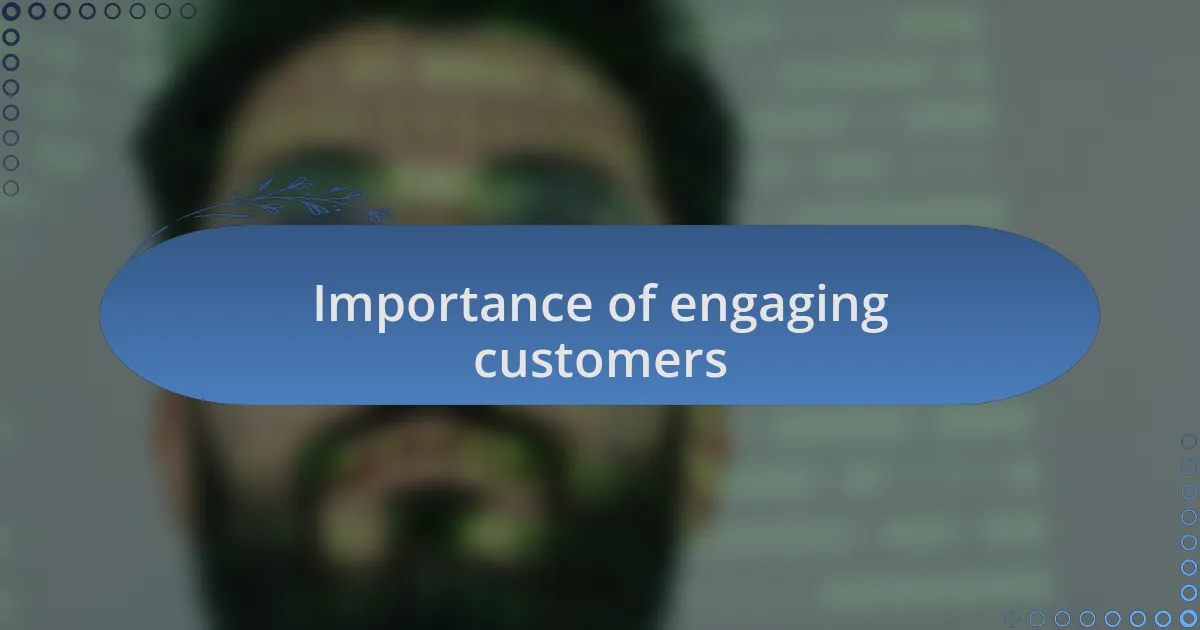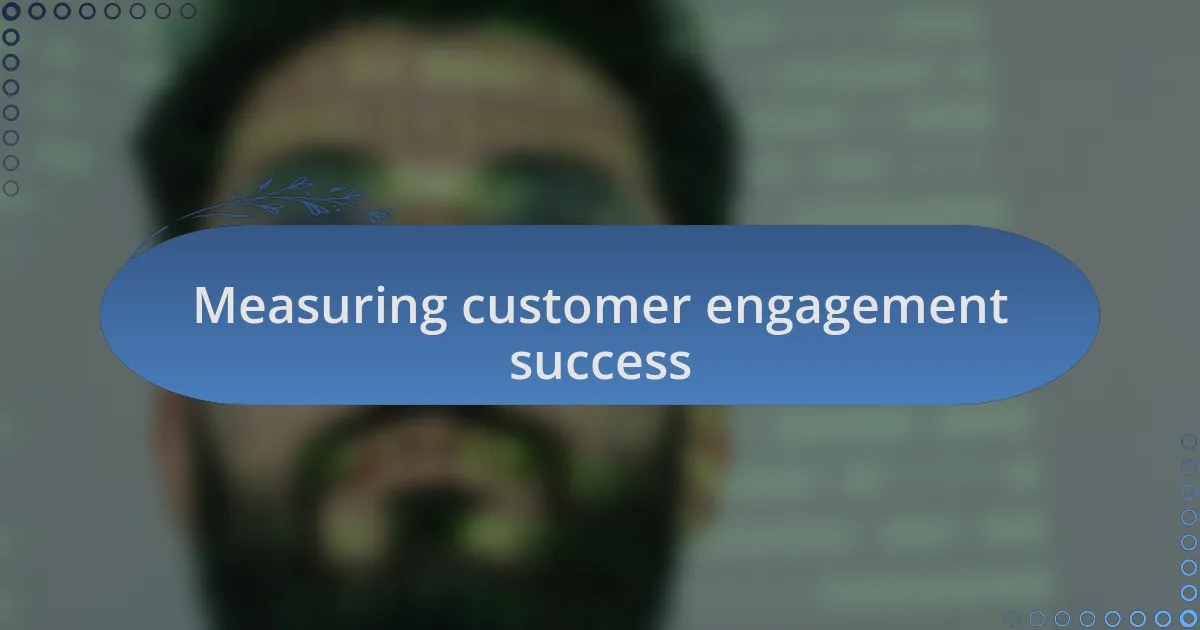Key takeaways:
- Creating content that addresses customers’ needs and emotions fosters deeper connections and engagement.
- Incorporating interactive elements like polls and quizzes enhances user involvement and creates a sense of community.
- Building meaningful experiences through storytelling and transparency increases customer loyalty and advocacy.
- Utilizing analytics and user feedback effectively measures engagement success and guides future content strategies.

Understanding content engagement strategies
One of the most effective strategies I’ve found for engaging customers is creating content that speaks directly to their needs and emotions. For instance, I once crafted a blog post addressing pain points faced by small business owners in the web development space. The responses were overwhelming; readers appreciated feeling seen and understood. Isn’t it powerful when your content resonates so deeply with your audience that they feel compelled to reach out for more?
Incorporating interactive elements like quizzes or polls can elevate engagement significantly. I remember introducing a poll on our website asking visitors about their biggest challenges in adopting new web technologies. The results not only guided our content creation but also sparked discussions within our community. Have you noticed how people love sharing their opinions? This kind of interaction can create a sense of belonging and investment in your brand.
Storytelling is another key engagement strategy that I swear by. I once shared a personal experience of overcoming a major web design challenge, and it struck a chord with many readers. They often shared their stories in return, creating a dialogue that felt organic and supportive. Isn’t it amazing what happens when you just share your journey and invite others to do the same?

Importance of engaging customers
Engaging customers is crucial for fostering loyalty and building long-term relationships. I recall a time when I hosted a webinar focused on emerging web development trends. The active participation in the Q&A segment was a clear indicator of how much the audience valued the chance to interact directly, reinforcing their connection to our brand. Isn’t it interesting how genuine interaction can transform a simple presentation into a collaborative experience?
Moreover, engagement can turn passive consumers into active advocates for your brand. After implementing a feedback loop, I noticed a significant increase in referrals from clients who felt their voices mattered. They didn’t just like our services; they became enthusiastic representatives, eager to share their positive experiences. Doesn’t it make you think about the immense value of creating advocates from within your customer base?
At its core, engaging customers is about creating meaningful experiences. I remember an instance where I shared a behind-the-scenes look at our team’s process for a large project. The response was heartwarming; clients expressed appreciation for the transparency and camaraderie. When customers feel involved and valued, it enhances their overall experience and nurtures a deeper connection with the brand. How often do we underestimate the power of simply letting our audience in?

Overview of web development services
Web development services encompass a wide range of offerings designed to create, maintain, and enhance websites. I’ve seen firsthand how a seamless user experience can make or break a visitor’s perception of a brand. For instance, when I worked with a client launching their e-commerce site, careful attention to responsive design helped ensure that their customers enjoyed a smooth shopping experience across all devices. Isn’t it fascinating how technology shapes the way we interact with a business online?
At their essence, web development services include front-end development, back-end development, and everything in between. I remember collaborating with a talented developer who specialized in back-end systems; their ability to manage databases and server-side logic was nothing short of impressive. This balance between front-end aesthetics and back-end functionality is what truly breathes life into a website. How can we expect visitors to stay engaged if they can’t easily navigate our sites?
Moreover, the rise of modern frameworks and content management systems has transformed the web development landscape. Engaging with these technologies allows teams to build websites that are not just visually appealing but also robust and functional. Whenever I introduce a new tool to improve our workflow, I feel an exhilarating sense of possibility. It’s an adventure exploring new ways to enhance user engagement. Have you ever felt that rush when you realize technology can elevate your services to new heights?

Creating valuable content for users
Creating valuable content for users involves understanding their needs and crafting messages that resonate. I recall a project where we developed a blog for a client in the tech industry. By prioritizing educational articles that addressed common questions, we not only drew traffic but also established trust with potential customers. Have you ever noticed how when you find answers to your questions, it makes the whole experience feel more valuable?
Furthermore, it’s important to leverage various formats to reach different audience segments. When I introduced video tutorials alongside written guides on our site, I was amazed at the increase in user engagement. It’s incredible how diverse content types can cater to unique learning preferences. Have you considered how you can mix up your content offerings to connect better with your audience?
Lastly, incorporating user feedback into content creation is a game changer. On one occasion, after a client released a survey to gather insights, we adjusted the content strategy based on their input, resulting in a remarkable increase in site interactions. It’s clear that when users feel heard, they are more likely to engage with the content. What kind of feedback mechanisms are you using to ensure your content remains relevant and valuable?

Techniques for interactive content
Interactive content is all about inviting users to participate rather than just consuming information. I remember when we integrated polls and quizzes into our blog posts, and the response was overwhelming. It felt rewarding to see users not only engage more but also share their results on social media. Have you noticed how a simple question can spark a lively conversation?
Another effective technique I’ve used is gamification, which turns learning or exploring content into a fun experience. In one project, we developed a points system for users who completed tutorials, which encouraged repeat visits and fostered a sense of community. When users feel like they’re part of a game, they often invest more time and interest—what’s stopping you from adding a bit of playfulness to your content?
Finally, incorporating visuals like infographics or interactive sliders can significantly enhance engagement. One time, we created an interactive infographic that allowed users to explore data dynamically. The response was fantastic, and it amazed me how much more information could be communicated in an engaging way. Have you ever thought about how visuals can transform dry statistics into a meaningful story?

Measuring customer engagement success
One of the most effective ways I’ve found to measure customer engagement success is through analytics tools. For instance, when I tracked page views and time spent on specific content, I noticed patterns that revealed which topics resonated most with my audience. It’s eye-opening to see how certain pieces lead to deeper conversations—have you ever watched your website explode with activity after posting that one article?
Another indicator I often rely on is user feedback. I remember implementing a feedback form at the end of a particularly deep-dive tutorial, and the insights I received shaped future content directions. When users take the time to share their thoughts, it’s a clear sign they are invested—how often do you directly ask for input from your audience?
Engagement metrics like social shares and comments also tell a compelling story about connection. One time, a well-timed post went viral, and I was thrilled to see the conversations unfold in the comments section. It reminded me of how engagement isn’t just about numbers; it’s about creating a community that actively participates. Have you taken a moment to evaluate what your metrics are truly saying about your audience’s interests?